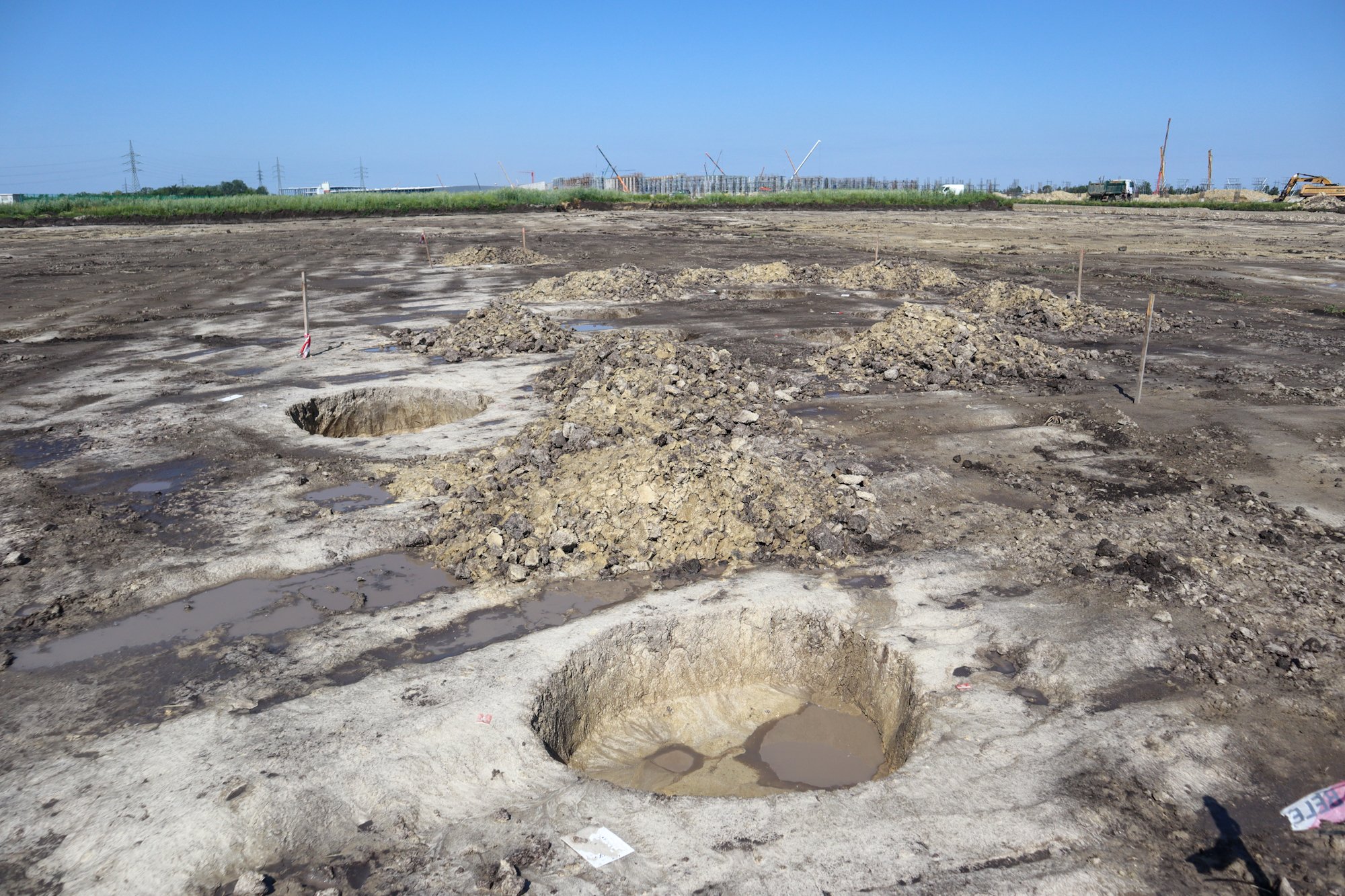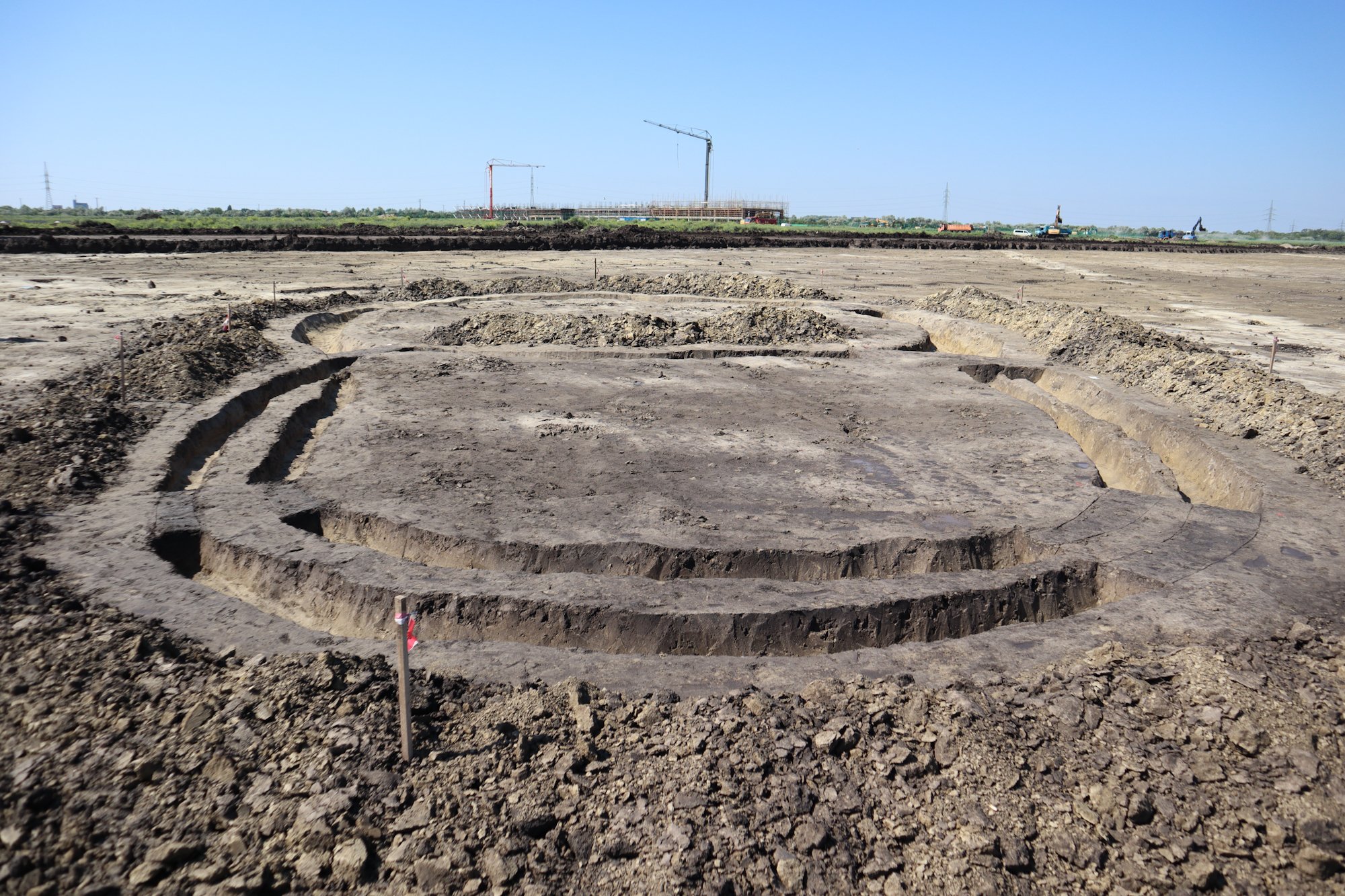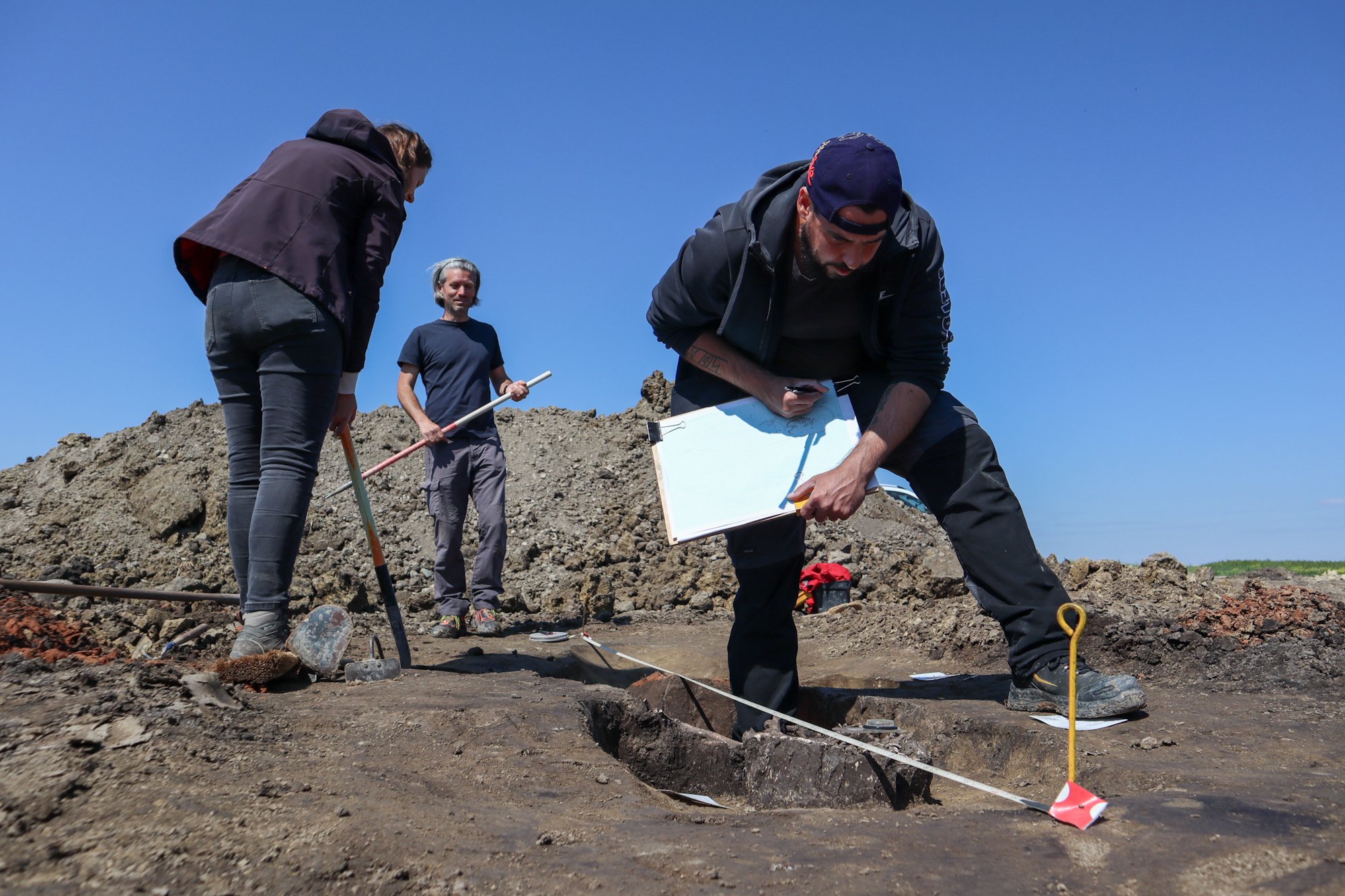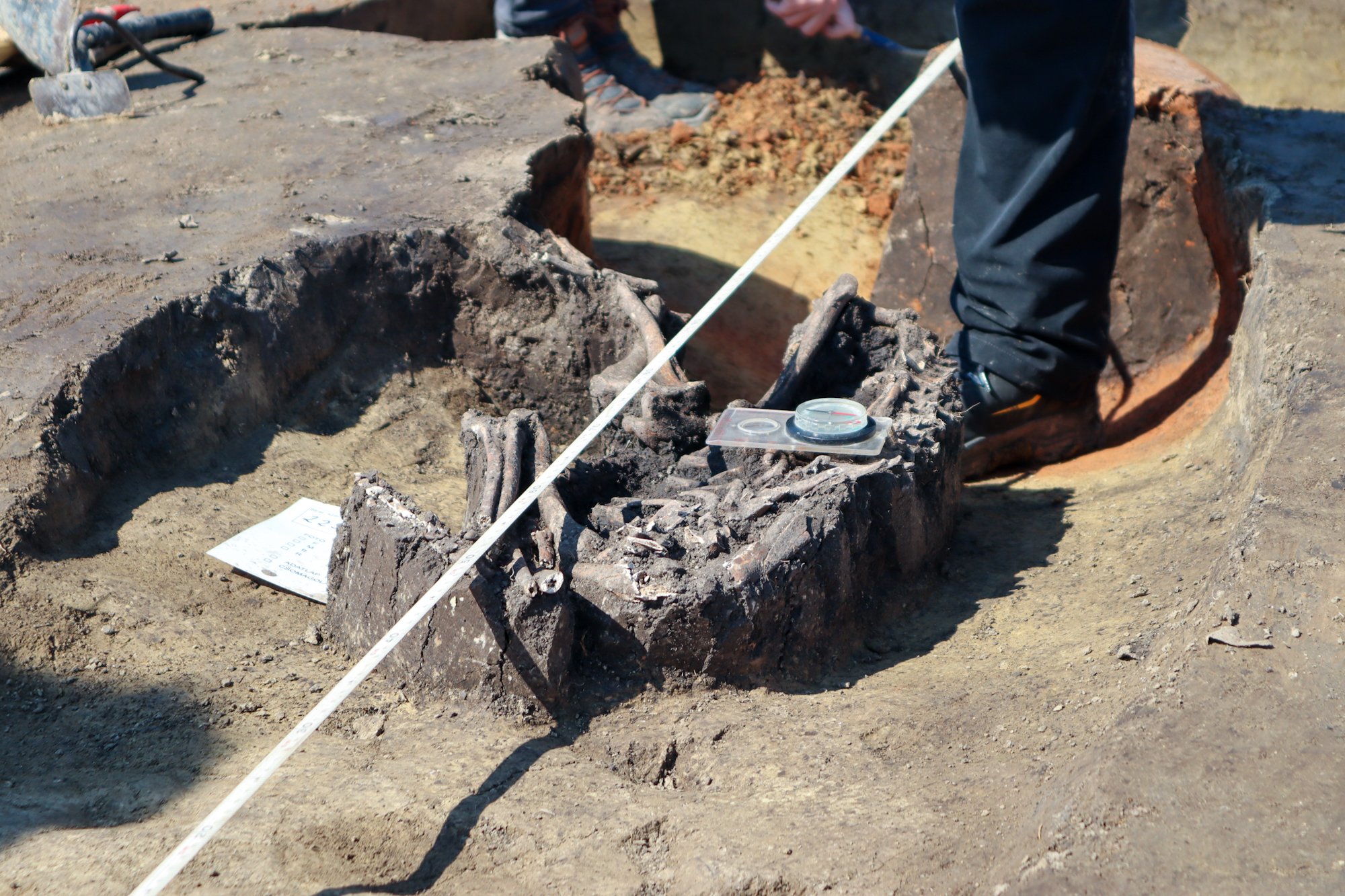Ancient settlement features uncovered at future BYD Szeged site
During a guided visit last week to the site of the future BYD electric car factory near Szeged, archaeologists showed and explained previously uncovered features of an early medieval settlement – part of a larger excavation project that has yielded some of Hungary’s most significant recent archaeological discoveries.
The dig, led by the Hungarian National Museum and the Móra Ferenc Museum, is part of a comprehensive preventive excavation across the 300-hectare construction site. The work precedes major development by the Chinese automaker and has already uncovered a range of finds spanning from prehistory to the Middle Ages.
At the section visited, archaeologists had exposed a tightly clustered array of underground pits, likely used for storing grain or vegetables. Scattered ceramic fragments and subtle structural traces suggested the presence of a small rural settlement or farmstead dating to the early medieval period.
The visit was led by Kornél Sóskuti, a lead archaeologist with the Hungarian National Museum, along with his colleagues working on the excavation. The team explained the layout of the site, their findings, and the broader historical context of the area.
Despite Csongrád County’s reputation for thorough archaeological mapping, the concentration of finds on the factory grounds has exceeded initial expectations. The location – between the Öthalom Hills and the Fehér Lake – sits in a flood-prone lowland once thought unsuitable for long-term settlement or burial. However, excavations have challenged those assumptions.












Photos: Szilvia Molnar / Szegedify
While earlier studies had documented an Avar-era burial ground near Fehér Lake, recent work has shown that the surrounding landscape was inhabited almost continuously from prehistoric times through the Árpád Era. At the BYD site, a complete 152-grave Avar burial ground was recently uncovered, along with artifacts including a gold earring and a bell believed to have originated in the Byzantine Empire.
The excavation is being carried out in accordance with Hungarian heritage protection regulations, with support from the Hungarian Investment Promotion Agency and the local municipality.
Although much of the main excavation work is nearing its conclusion, archaeological monitoring will continue alongside construction. Teams will remain on-site for months to track any further discoveries, especially in areas not previously identified as historically significant.
Researchers say that opportunities to investigate such an extensive area before major development are rare, and that the finds here, both large and small, will contribute significantly to the region’s archaeological record.